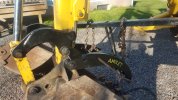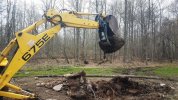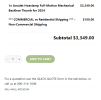Hi Guys...new member here.
I have an old Ford 555D that I'm wanting to add a hydraulic thumb to. There are currently no provisions (that I'm aware of) for adding an auxiliary hydraulic attachment. The machine specs lists an open center hydraulic system with a pump flow rate of 30 GPM. I'd like to utilize a 12V electric solenoid with a switch to operate the hydraulic thumb. I don't intend to operate the backhoe at max rpm while utilizing the thumb.
My question is, would I need a 30 GPM solenoid valve or could i down size to a 25 GPM. I'm having trouble finding a 30 GPM and when i do, they are VERY expensive. Thanks in advance for the help.
I have an old Ford 555D that I'm wanting to add a hydraulic thumb to. There are currently no provisions (that I'm aware of) for adding an auxiliary hydraulic attachment. The machine specs lists an open center hydraulic system with a pump flow rate of 30 GPM. I'd like to utilize a 12V electric solenoid with a switch to operate the hydraulic thumb. I don't intend to operate the backhoe at max rpm while utilizing the thumb.
My question is, would I need a 30 GPM solenoid valve or could i down size to a 25 GPM. I'm having trouble finding a 30 GPM and when i do, they are VERY expensive. Thanks in advance for the help.



